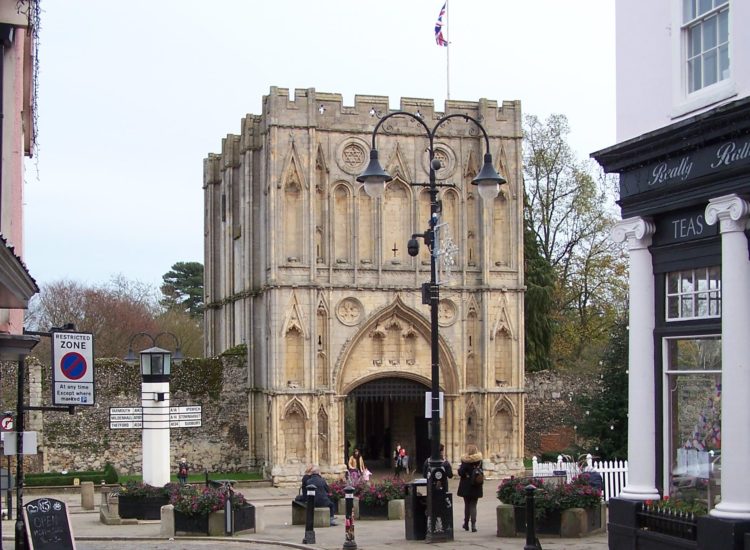
3rd September 2021
The Town Rebels and more trouble
By Martyn Taylor
In 1327 a year of national unrest with the grim demise of Edward II the town was under the total control of the Abbey, this led to various abuses of the townsfolk via taxation. The culmination of these saw the people of the town rebel, attacking the abbey, hoping to seize the records of taxes, tithes, rents and other dues within.
The leaders of the revolt, John De Berton who had been illegally elected Alderman and Gilbert Barbour were instrumental in leading a mob. Richard de Draughton, the 18th abbot who after receiving much abuse fled to London. He returned to Bury where he subdued the rioters with the aid of the Sheriff of Norwich. The result of which was that thirty cartloads of prisoners were taken off to Norwich where some were convicted of treason and a huge fine of £14,000 imposed on the town although only a small proportion of it ever paid. John de Berton and Gilbert Barbour subsequently escaped and took up sanctuary within the Babwell Friary (site of today’s Priory Hotel) in Bury. On leaving they kidnapped the hapless De Draughton and took him to Brabant in the Low Countries.
Two years passed and the abbot returned to Bury, the two main protagonists, Barbour and Berton were imprisoned where the latter died, Barbour’s fate is not known.
Interestingly the Abbeygate, secular entrance to the abbey and in Norman style architecture, destroyed in the riots was rebuilt in the English Decorated style with niches and embellishments by 1347, but not in its original position. No longer opposite todays Abbeygate Street it is further along to where it was obviously there was no point in moving rubble and stone twice nor having the same destruction happen again, when cartloads of burning hay were rolled down!
The later years of the 14thC saw the Abbey in turmoil, plague was rampant, the death rate high, the convent, normally 60-80 monks decimated.
A shortage of monks then could be why, in 1369, two monks who were involved in an altercation with another resulting in his death were given a pardon by King Edward III. In normal circumstances monks were not treated as special cases, they were subject to the common law of the land after all but by attempting to conceal their dead colleague by burying him they had committed a felonious act. Did the Abbot persuade the king to pardon them, who knows?
What we do know is that in the year of The Peasants Revolt 1381, a semi-national uprising against the insidious Poll Tax culminating in the death of its main leader Wat Tyler saw more rioting in Bury St Edmunds. Here the principal activist in East Anglia, Jack Wrawe, urged his supporters to attack the Abbey once again as they had done in 1327.
Two luckless symbols of authority felt the full weight of the mob’s hatred. One was the King’s Justicar (Chief Justice), Sir John Cavendish, author of the hated poll-tax, the other the abbey’s Prior, John De Cambridge. Both were decapitated, their heads were put on spikes in the marketplace, facing each other as in mocking conversation. This time retribution was in the hands of the warrior Bishop of Norwich, Hugh Despenser who personally led his royal troops into the town putting down the insurgency without pity. Wrawe was arrested and after a summarily show trial met a traitor’s death, hung, drawn and quartered. Heavy fines were then imposed, the aftermath of which Bury was the only town in the whole country that King Richard II decided not to allow the penalties to be rescinded after the riots had ceased.
For details of the events to celebrate the Abbey’s 1000th anniversary visit www.abbeyofstedmund1000.co.uk which will be updated throughout the year!
Similar articles
9th July 2024
Imagining the past
Steven Brindle describes how English Heritage created a new reconstruction of the…
10th April 2024
The Abbey of St Edmund Project awarded £730K grant by the National Lottery Heritage Fund
St Edmundsbury Cathedral in Bury St Edmunds, along with its partners…
7th March 2024
New visitor guide leaflet
The latest and probably final version of the visitor guide leaflet has…
View all news
